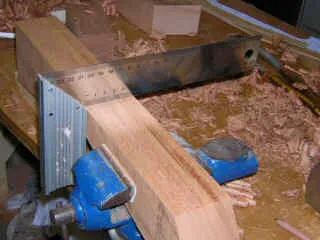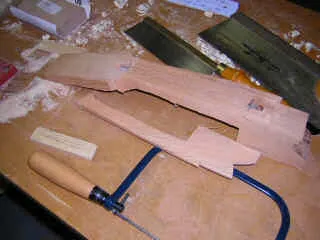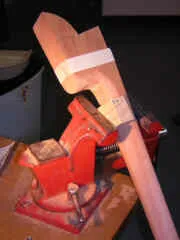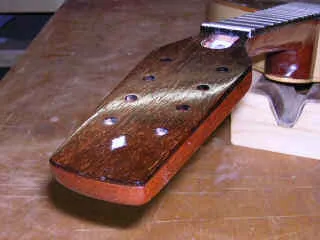|
Neck 1: The neck is made from one piece of mahogany or sycamore, and fitted with a truss rod. It is fitted to the body using slots either side of the heel, which produces a strong join. Heads are laminated before fitting with tuners. |
|||

|

|

|

|
| The neck is perhaps the most difficult part to make. Here checking it is perfectly level to receive the fingerboard. | The shape of the neck is scribed on the side before cutting out. | The truss-rod is fitted before side profiles are cut and the neck becomes too difficult to hold. | Here the shape of the head is being formed, more complex because it is a single piece with the neck. |

|

|

|

|
| With the side profiles done, the rough shape is now cut and ready for filing and sanding to shape. | Head veneer in rosewood is cut and glued. | Neck slots are cut at a strategic angle to house the instruments ribs. | The finish head. |











